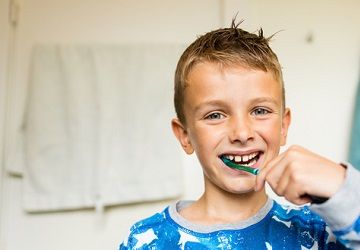National Brush Day Looks to Limit Post-Halloween Cavities
This campaign includes materials that can promote better brushing among younger dental patients.

Maybe you won’t see an influx of children with post-Halloween cavities this year.
Today, the day after Halloween, marks National Brush Day, according to the American Dental Association (ADA). The Children’s Oral Health campaign is a driving force behind the effort, which is aimed at encouraging parents to lower their kids’ risk of cavities and other oral diseases by making sure they brush for 2 minutes, 2 times a day.
This year’s efforts included a social media campaign to encourage parents and children to share their brushing selfies.
The ADA quotes Gary Price, secretary and CEO of the Dental Trade Alliance Foundation, as saying, “Lots of children enjoy extra candy around Halloween, but parents and kids should understand that eating the candy can lead to problems with their teeth.”
According to the ADA, tooth decay is the most common chronic disease among American children. The ADA also reports that parents don’t prioritize the oral health of their children, compared to issues such as school safety and nutrition.
The Centers for Disease Control and Prevention (CDC) estimates that about 1 in 5 children between the ages of 5 and 11 have at least one untreated decayed tooth. Additionally, according to the CDC, children from low-income families are at an increased risk for tooth decay. These children, ages 5 to 19, experience tooth decay at a rate of about 25%, compared to 11% in higher-income households.
For parents and children who need reinforcement, the 2MIN2X website contains valuable resources, including timelines for when brushing, flossing, fluoride and scheduled dental visits should occur. The group. The organization has also created a video as well as a free game that can be played on mobile phones.